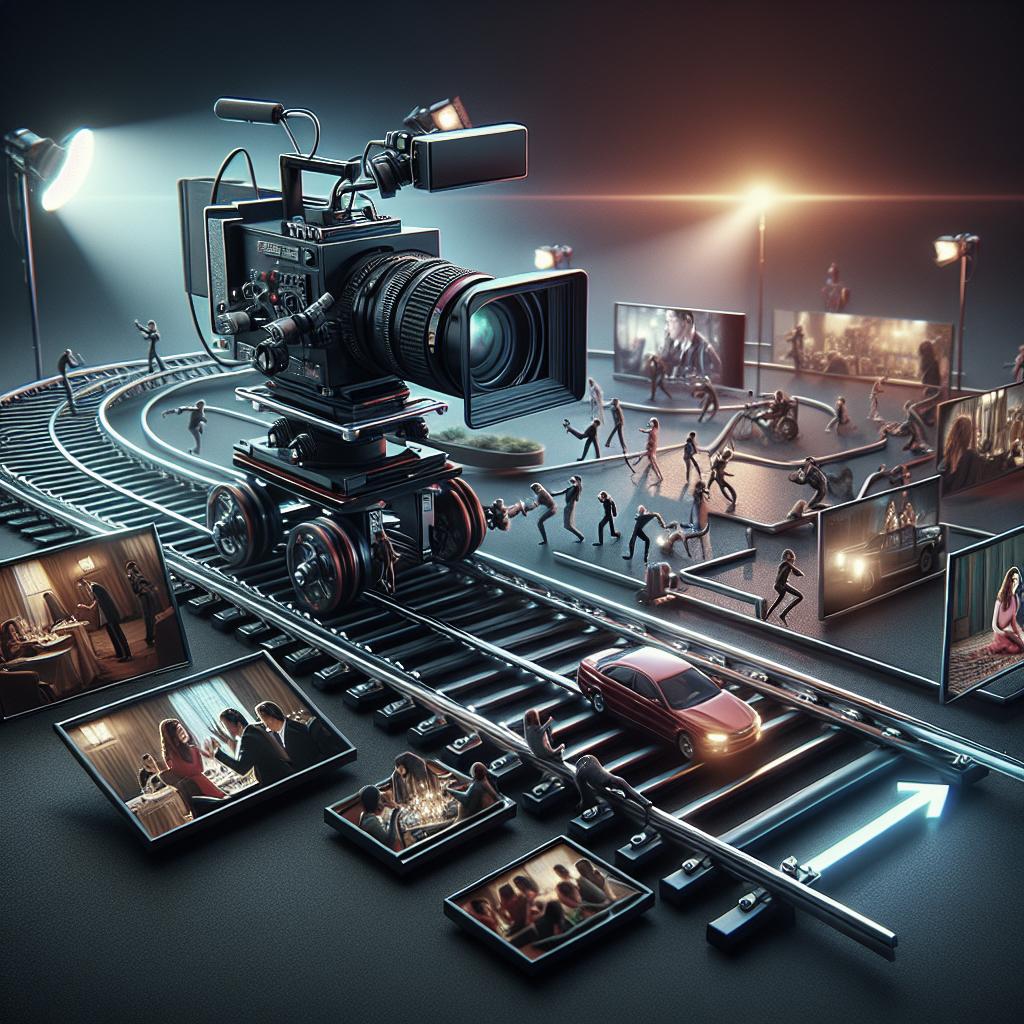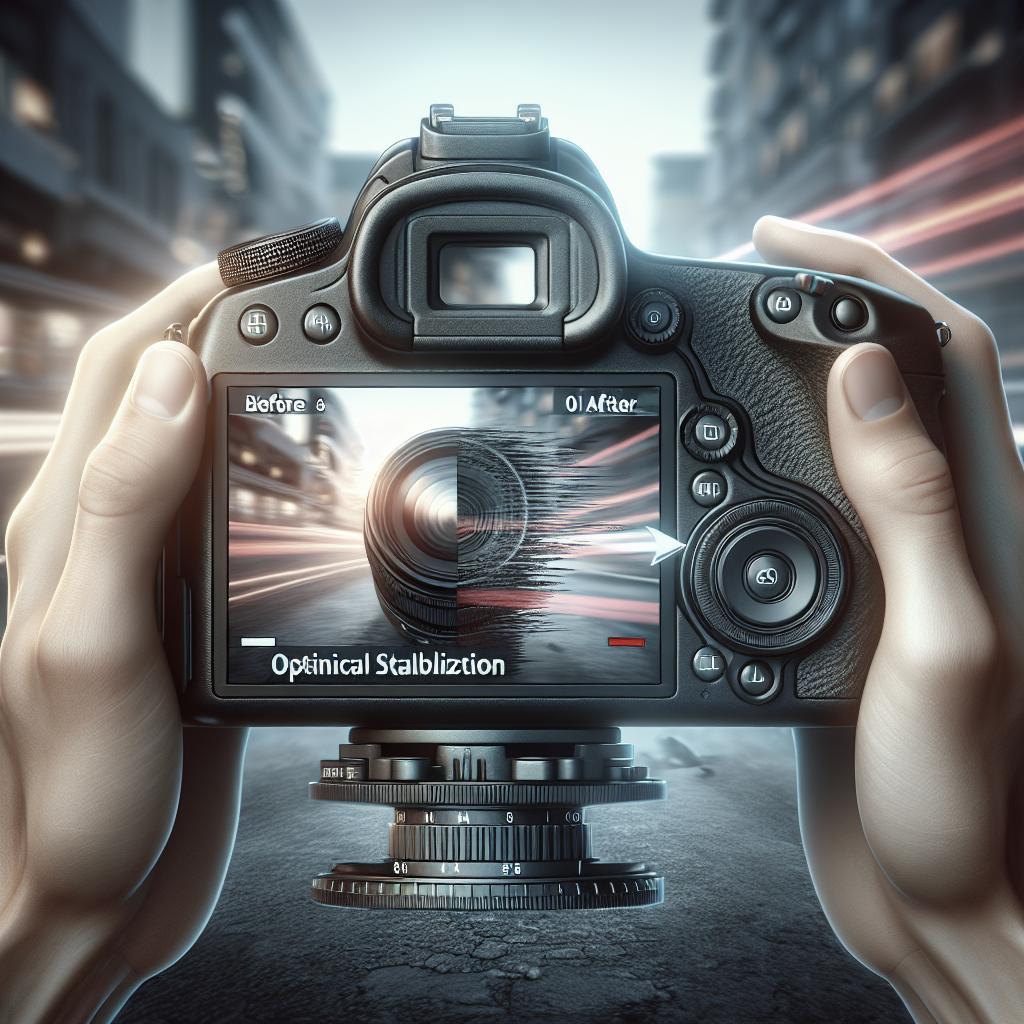“`html
How Dolly Shots Enhance Storytelling in Video
In the realm of cinematic techniques, dolly shots stand out as an exceptional method to enhance storytelling. These shots aren’t just visually captivating; they’re powerful tools that provide depth and context to a scene. Throughout this blog post, we’ll delve into the technical workings and storytelling prowess of dolly shots, explore the different types and their distinct purposes in film, and take a look at both industry-standard and creative DIY dolly equipment. Whether you’re an aspiring filmmaker or a curious movie enthusiast, you’ll discover useful insights on integrating dolly shots into your projects. By the end, you’ll gather practical knowledge on how to achieve this compelling effect, even on a budget.
There’s Nothing More Cinematic Than a Great Dolly Shot
Dolly shots have become synonymous with sophistication and creativity in filmmaking. They produce smooth, dynamic movement that can seamlessly transport viewers into the world being portrayed on screen. Filmmakers have long utilized this technique to elevate scenes, making them more engaging and immersive. The ability to move the camera in relation to the subject or environment enables directors to craft a deeper narrative and add layers of meaning to their work.
Executing a flawless dolly shot requires a blend of technical finesse and artistic vision. The challenge lies in achieving smooth, controlled motion while maintaining the narrative’s emotional core. Mastering this can enhance your storytelling and leave a lasting impression on your audience. It’s critical to understand the intricacies involved and how to effectively integrate dolly shots into your film projects.
What Is a Dolly Shot?
A dolly shot is a filmmaking technique where the camera is mounted on a cart or dolly that rolls along a track. This allows the camera to move smoothly, enabling it to follow, approach, or circle around subjects. The primary objective is to provide a sense of depth and continuity within a scene, making it an invaluable storytelling tool.
Unlike static shots, dolly shots capture the fluid dynamics of a scene, whether it’s the tension of an oncoming threat, the revelation of new information, or the intimacy of a character moment. This technique can be used to convey emotions or depict journeys, offering audiences a richer and more nuanced narrative experience.
Different Types of Dolly Shots
There are several varieties of dolly shots, each serving specific storytelling purposes. The most common are dolly-in and dolly-out shots. A dolly-in shot involves moving the camera closer to the subject, often heightening tension or focusing the audience’s attention on a vital detail. Conversely, a dolly-out shot pulls back from the subject, typically used to reveal more of the setting or to signify the character’s isolation or vulnerability.
Other variations include the dolly zoom, famously known as the “Vertigo effect,” where the background appears to change size relative to the subject. Tracking shots follow the movement of characters, providing an immersive experience by maintaining a close connection throughout action scenes. Each type serves a distinct narrative function and can dramatically alter the viewing experience.
The Purpose of a Dolly Shot
The primary function of a dolly shot is to enhance narrative storytelling by adding motion and depth. These shots can underscore the gravity of a scene, emphasize emotional shifts, or guide the audience’s focus seamlessly without disrupting the narrative flow. By doing so, they bring an added visceral quality that static shots cannot achieve.
Dolly shots also play an essential role in character development and thematic storytelling. As the camera moves, it can symbolize changes in perspective or the internal journeys of characters. Whether depicting a character’s moment of epiphany or the impending onset of danger, dolly shots subtly lead the audience through the narrative, enriching the film’s emotional and intellectual impact.
Industry Dolly Equipment
In professional filmmaking, quality equipment is critical to achieve the precision and smoothness required for dolly shots. Industry-standard dolly setups often consist of a heavy-duty wheeled platform and specially designed tracks, ensuring stability and versatility to navigate diverse shooting environments. High-end systems also offer advanced features, like remote-controlled movement and adjustable tracks, to accommodate complex shots.
Brands such as Chapman/Leonard and Fisher are well-regarded for their state-of-the-art dolly systems, offering both reliability and a broad range of applications. However, these solutions also come with significant costs that may not be feasible for all filmmakers, especially independents and small-budget productions.
Non-Traditional Dolly Equipment
For those seeking alternative solutions, non-traditional dolly equipment provides greater flexibility and affordability. Lightweight slider systems and handheld gimbals offer similar dynamic movement but with more portability and less cost. These tools are ideal for tight spaces and capturing spontaneous, on-the-go shots while maintaining the essential fluidity of motion.
Innovative filmmakers have also embraced drone technology to achieve aerial dolly shots traditionally unattainable with ground-based equipment. Drones deliver expansive, sweeping motion that can capture stunning perspectives, adding a bold visual dimension to storytelling without incurring the expenses of helicopter shots or advanced dolly systems.
Making Your Own DIY Dolly on a Budget
For filmmakers with limited resources, creating a DIY dolly system is a practical solution enabling the exploration of creative camera movements without a hefty price tag. A simple DIY dolly can be constructed using readily available materials like skateboard wheels, PVC pipes, and wooden platforms. These can provide a basic track and cart system to mimic professional dollies, offering budding directors an opportunity to experiment with dolly shots.
While building a DIY dolly may involve a learning curve, it allows filmmakers to understand the fundamentals of camera movement firsthand. This experience can be invaluable in honing storytelling skills and fostering innovation, ultimately allowing creators to push their narrative boundaries and deliver compelling cinematography on a budget.
Lessons Learned
| Concept | Description |
|---|---|
| Definition of Dolly Shot | A cinematographic technique using a wheeled cart (dolly) to achieve smooth camera movement. |
| Types of Dolly Shots | Includes dolly-in, dolly-out, dolly zoom, and tracking shots to serve different narrative purposes. |
| Purpose | Enhances storytelling by adding depth, focus, and emotional impact to scenes. |
| Industry Equipment | High-quality, track-based systems used in professional filmmaking, providing precision and stability. |
| Alternative Equipment | Affordable options like sliders and drones offering flexibility and ease of use for dynamic shots. |
| DIY Solutions | Homemade dollies using simple materials allow experimentation with dolly shots on a budget. |
“`


